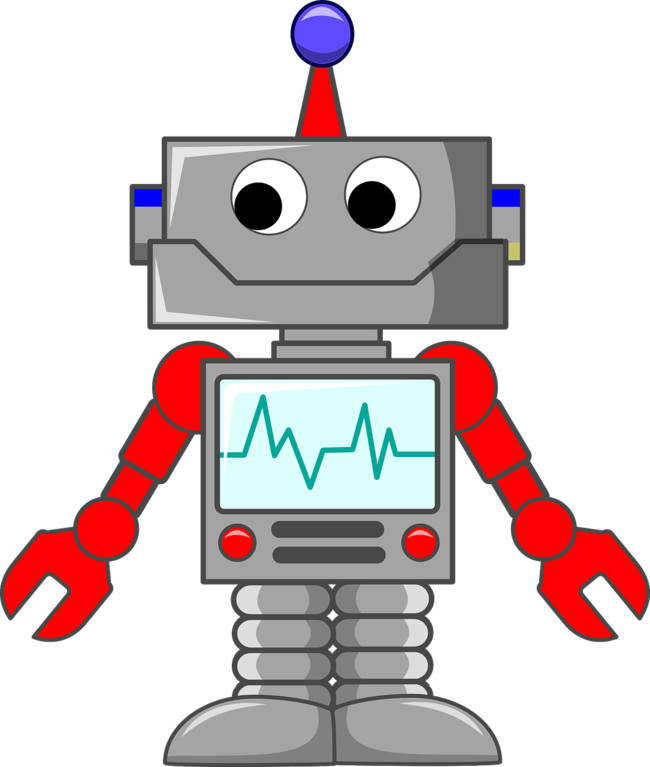
You can’t go anywhere at the moment without being bombarded by news stories and articles about Artificial Intelligence. It’s totally the flavour of the month, just like everything is when it supposedly “explodes” onto the scene.
Artificial Intelligence is defined by Alyssa Schroer in an article titled Artificial Intelligence at Built In as a wide-ranging branch of computer science concerned with building smart machines capable of performing tasks that typically require human intelligence.
Not that AI is actually new. Maria Diaz states in a ZDNet article entitled What is AI? Everything to Know About Artificial Intelligence that AI is a concept that has been around since the 1950s, when it was defined as a machine’s ability to perform a task that would’ve previously required human intelligence.
As Maria states, Alexa and Siri have been using AI for a while. Text editing software, including the auto correct function also uses AI.
And personally, auto correct and text editing software (including those awful reply suggestions that pop up on email) shit me to tears because they’re often wrong or inappropriate.
I’m simply glad that I can turn such tools off.
In my view, there are a number of limitations associated with Artificial Intelligence that I’ve outlined below.
Certainly, there is no need for hysteria about it replacing the beauty and formidable power and limitless capacity of human beings.

2. Artificial Intelligence is Artificial
The problem with Artificial Intelligence is that it’s artificial. Personally, I can’t stand listening to Alexa or Siri, because they’re robots. And they’re actually bloody annoying.
Plus a lot of the time they don’t actually understand what you request or provide a service that doesn’t add value to my life. If I want to select a particular song to play, I’ll just select it.
Artificial Intelligence that generates information based on a user’s request also has that robotic, brainless, sanitised, empty feel. It’s also lifeless and bland to read.
For example, I asked Bard the question, “How is wheat harvested?,” as per the below screenshot.

The full response to my question is recorded below :
Wheat is harvested using a machine called a combine harvester. A combine harvester is a large, self-propelled machine that cuts, threshes, and cleans wheat grains in a single pass.
The combine harvester has a large header at the front that cuts the wheat stalks. The stalks are then fed into the thresher, which separates the wheat grains from the straw. The grains are then cleaned and collected in a grain tank on the back of the combine.
Once the grain tank is full, the combine harvester unloads the grains into a grain cart or truck. The grain cart or truck then transports the grains to a grain elevator, where they are stored and processed.
In the past, wheat was harvested using a sickle or scythe to cut the stalks, and then the stalks were threshed and winnowed by hand. This was a slow and labor-intensive process. However, the combine harvester has revolutionized wheat harvesting, making it much faster and more efficient.
Here is a step-by-step overview of the wheat harvesting process using a combine harvester:
- The combine harvester drives through the wheat field, cutting the stalks. The header at the front of the combine harvester has sharp blades that cut the stalks just above the ground.
- The cut stalks are fed into the thresher. The thresher has a large drum with teeth that rub against the stalks, separating the wheat grains from the straw.
- The wheat grains are then cleaned and collected in a grain tank on the back of the combine. The grain tank has a fan that blows away any remaining chaff and straw.
- Once the grain tank is full, the combine harvester unloads the grains into a grain cart or truck. The grain cart or truck then transports the grains to a grain elevator, where they are stored and processed.
The wheat harvesting season varies depending on the climate, but it typically takes place in the summer or fall. In the Northern Hemisphere, wheat is typically harvested in July or August, while in the Southern Hemisphere, wheat is typically harvested in December or January.
Wheat is one of the most important food crops in the world, and it is used to make a variety of products, including bread, pasta, and cereal. The efficient harvesting of wheat is essential to ensuring that there is enough food to feed the global population.
The above text is like listening to a dead bore at a party.
And anyone reading the above text can smell that it’s been written by a robot a mile off.
Not only that, the above information doesn’t serve an Australian audience. In Australian farming, we abbreviate, and we know combine harvesters as “headers”. No one uses the term combine harvester in the real world of Australian farming. Wheat is also generally not stored in grain elevators at step four of the process, it’s normally transported to the local wheat bin, or stored in wheat silos or field bins. I have no idea where the idea that grain is stored in grain elevators came from.
I also asked Bard to create a 100 word summary of an article I’d written. The article had information that applied to lambs in a section, and information that applied to calves in another section. The summary I was delivered jumbled all the content together, utilising commonalities in some of the information to create sub topics or sentences that applied to both lambs and calves. This didn’t work at all, because any human being reading the summary will be looking specifically for information that applies to lambs and specific information that applies to calves. The summary was effectively useless, however this may not always be the case.
And sure, you can use AI to help generate ideas or as a tool to ensure that you haven’t forgotten about something that may be interesting in association with your topic. However, you can do this simply by searching the topic online, and searching online will often give you less sanitised and robotic results, because people have actually used their human capability to write about the topic in a way that is interesting and entertaining to other human beings.

2. Artificial Intelligence Software can get you into Trouble with Plagiarism
Don’t you just love the nappy on the robot in the photo above? Good to see someone with a sense of humour creating awesome images.
Sorry, back to business again now. Plagiarism is a very really issue with Artificial Intelligence tools like Bard or Chat GPT. You have absolutely no information about where the information you’re being served has come from. At least if you search for information online yourself you can check and credit the sources of such information as you go.
And, if you dish up information that comes straight from generative AI software, you are not providing authoritative or “expert” information from a strong source. If you instead write your own original content as an experienced business owner who knows your field and you include your details at the bottom of the article, you are. When Google ranks websites, it looks for authoritative information, according to its own Search Engine Optimisation (SEO) Starter Guide. Under the subheading, Make expertise and authoritativeness clear, the guide states that the “Expertise and authoritativeness of a site increases its quality. Be sure that content on your site is created or edited by people with expertise in the topic.”
That’s you, baby.

3. Artificial Intelligence software spits out content pulled from all over the place by robots, not unique content written by human beings for human beings.
Getting your business website to rank means that it needs to provide quality content that actually helps human beings. Serving up sanitised robotic lifeless guff that just fills in a page will instead send your ranking to the proverbial shitter.
Google’s Search Engine Optimisation (SEO) Starter Guide states under the sub heading Create fresh, unique content that, “New content will not only keep your existing visitor base coming back, but also bring in new visitors.” It goes on to tell you to avoid, “Rehashing (or even copying) existing content that will bring little extra value to users.” The guide also states the following under the subheading Make your site interesting and useful, “Creating compelling and useful content will likely influence your website more than any of the other factors discussed here. Users know good content when they see it and will likely want to direct other users to it. This could be through blog posts, social media services, email, forums, or other means. Organic or word-of-mouth buzz is what helps build your site’s reputation with both users and Google, and it rarely comes without quality content.”
© Annemaree Jensen
